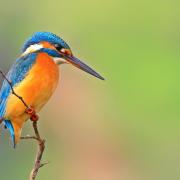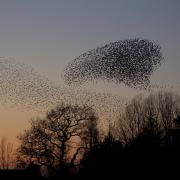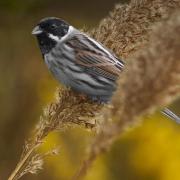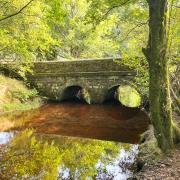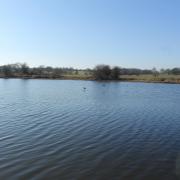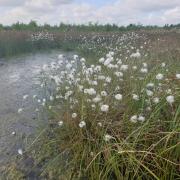Hugh Hornby rows out into the Lune estuary and tries to net a salmon in an age old way
THERE are few better places to be in Lancashire than the Lune estuary on a sunny morning.
Here, where the river runs out between Glasson and Sunderland Point, John Gerrard has the region's only licence to use a draw, or seine, net for catching wild salmon. John's family has been working Crook Farm, hard up to the shore, since 1676.
There is a long tradition of fishing here. John fishes with Mike Price from the Port of Lancaster Smokehouse at Glasson Dock. John's son Will, 11, lends a hand during the school holidays. The close-grained flesh has a wonderful flavour and none of the flabbiness of the farmed version.
There is strong demand for whole fish from some of the North West's top restaurants and Mike can sell all the salmon they catch, either fresh or smoked. What is left over is smoked for the Christmas market.
The season is short, from June 1 to August 31, and the licence prohibits fishing at the weekends. The net can only be used between 6am on Mondays and midnight on Fridays. At least there is no limit on the catch.
For their own good, perhaps salmon should arrive on the Lancashire coast only at certain times, like Saturday holidaymakers on wakes weeks. But choice is not theirs: they must return to the river of their birth to spawn. The time for fishing is at low-tide, when the sea is ebbing away from the land. So twice a day there is a window of two or three hours before the tide turns and floods back in.
Its speed is not to be underestimated. And yes, this means that the men go out at night, in the darkness, when experience is vital. But here we are at 10am in the sunshine. Oystercatchers stand guard on the water's edge, peewits flap languidly overhead and knots dart from sandbank to sandbank.
Lord Ashton owned the fishing rights on the Lune in Lancaster in the early 20th century and the memorial he built for his late wife is visible on its hilltop, with Whernside and Ingleborough rising up behind.
To complete a beautiful picture, we are so low down here that Heysham power station is hidden from view. A tractor pulls the boat to the water's edge on a low trailer. The eastern shore is stony - no good for dragging a net. So first we must row across the channel to the Sunderland Point side.
The outboard motor is reserved for wilder conditions than these. Keen to lend a hand, I volunteer to row, thinking that my limited experience in an eight many years ago might suffice. But these oars are much heavier and handling both at once is far from easy. The boat progresses like a drunk walking home from the pub.
The channel is only around four feet deep in the middle, so the last yards upstream are gained more quickly by John and Mike wading through the water, pushing and pulling the boat. It is hard to see how big sailing ships, which used this route in the 18th century, made it all the way up to Lancaster with their cargoes of cotton and sugar.
Perhaps easier to imagine, although further back in time, are the monks of Cockersands Abbey, whose Chapter House ruins are visible just down the coast, working the estuary. Some of their wealth came from these sands and waters. The Abbey, founded in 1190, had the perpetual right to use a baulk, a huge barrier of stones, wooden poles and willow or hazel panels, as a massive fish-trap. The Abbey, like so many in England, was dissolved by Henry VIII in 1539.
The baulk was maintained by generations of local people, with the rights changing hands many times. The religious connection was kept up with 'the tithes of the baulks', whereby the Vicar of Cockerham received the catch from the tides following the new and full moons each month. The baulk was constructed near the Plover Scar lighthouse.
As the tide ebbed, fish were corralled into the centre and caught in nets or stranded in shallow pools. As well as salmon and sea trout, there would be mullet, plaice, codling and even the occasional seal. The rights were finally acquired in the 1950s by the Lancashire River Board (now part of the Environment Agency). They have not been exercised since as a conservation measure.
To begin the fishing today, Mike stays on the sandbank while John rows back out into the stream. Mike then pushes a wooden stake deep into the sand and has to hold it against tremendous pressure while the trap is set. A huge semi-circle is drawn by the boat, as the net is fed out from the stern. Floats at the top and a lead line at the bottom keep the net extended. When John reaches the bank a hundred yards downstream, the net is smartly drawn in by hand.
This is extremely hard work and involves both men pulling together. Mike uses a wooden pole initially, as he walks down towards his partner at the other end. It is important to keep the bottom of the net in line with the top. Excitement mounts as the seconds pass. For all its functionality, this is what netting has over fly-fishing. You are not reeling in after a bite, you are clutching at hope. A sudden flash of silver sends a current shooting up your arms.
Salmon are not plentiful, so every single catch is cause for celebration. Sea bass, also lovely to eat, can be a bonus. Finally, the net is all gathered in.
The work, however, is far from finished. The net has to be carefully folded back onto its tray on the stern of the boat before a second draw can be tried. The whole process is repeated. On some days, no fish will be caught. In that case, the beauty of the location is small recompense for the effort involved. This is business. At the beginning of this season, John and Mike pulled a 24 pound salmon out of the Lune, the biggest for many a year. It was a great moment but did not prove to be a good omen. Most of their catch has been much smaller, averaging around 5-6 pounds, but those are still valuable fish. As Mike says: 'It hasn't been a good season and the weather certainly hasn't helped.' Demand is met by contributions from other forms of fishing in the area. Haaf netsmen stand in the water with small nets strung from poles. Whammel boats, further out in Morecambe Bay, use drift nets.
John is extremely knowledgeable about the best conditions for fishing, as befits someone whose ancestors have overlooked the Lune's mouth for generations. 'A big problem this year has been the very high rainfall. The massive amounts of fresh water running into the Lune end up here, diluting the saltiness of the estuary.' He dips his finger into the river for a taste and is not impressed. The salmon prefer a gradual transition from salt to fresh water and many will loiter off shore until the salinity increases. By then, the season may have ended.
The licence to use the draw net is granted by the Environment Agency. But the Agency has said that it will only last as long as John Gerrard. When he stops fishing, that will be it, and the draw net will join the baulk in being a technique consigned to local history. John's son Will is learning skills he will not be able to use. Better make the most of days like these. ? Wild Lune salmon is available at the Port of Lancaster Smokehouse in Glasson Dock or from www.polsco.co.uk











